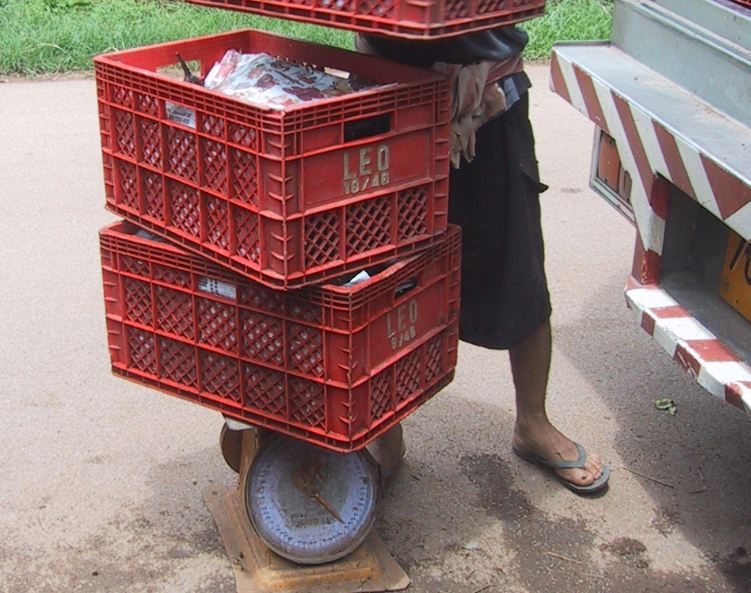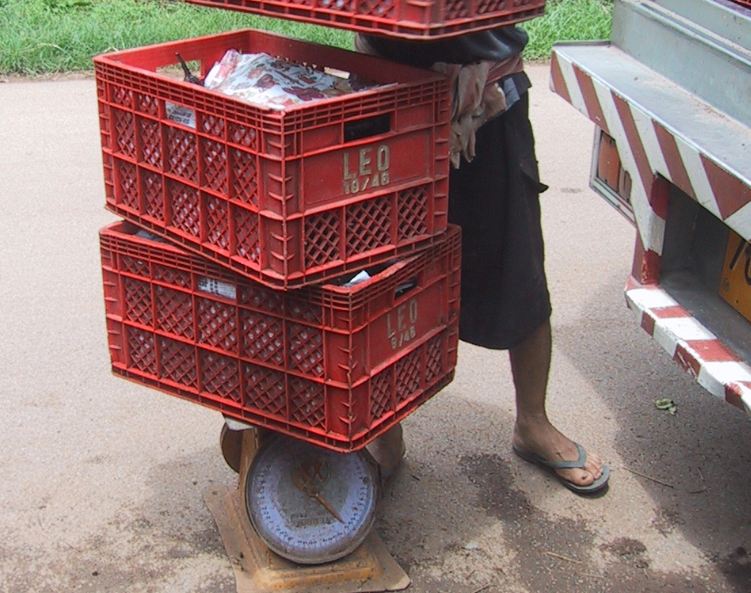Contract farming has a bad reputation, often being associated with the exploitation and proletarianisation of vulnerable small holders. But, as I argue in Thailand’s Political Peasants, this isn’t always the case. In this post I provide an extract from Chapter 4, describing how farmers in Ban Tiam have been able to use contract farming to help them diversify the agricultural sector while, at the same time, reducing the risk of indebtedness. (Earlier posts in this series of extracts are available here.)
In Ban Tiam, contract farming has been adopted in response to specific vulnerabilities in the local economy. It is an adaptive and, for the time being, experimental response to the hazards of independent garlic cultivation and, more fundamentally, to the relative absence of private investment in local enterprise. In specific terms, the primary attractiveness of contract farming for Ban Tiam’s dry-season cultivators lies in the fact that they do not have to pay the crop’s input costs [unlike garlic, where input costs are very high and are a major source of indebtedness]. Under the terms of the various contracts, the contracting companies provide the farmers with seedlings (or seed) and agrochemicals. The cost of these inputs is deducted from the selling price of the crop. If the crop fails, the “debt” is written off and the loss is borne by the company. One farmer summed up the widely acknowledged benefits of this arrangement: “We are growing for the companies because at least they are willing to invest the capital. We don’t have to hurt ourselves with debt. We don’t have to get stressed or tired. Investing labor is not as stressful as investing money.” Of course, crop failure is still regarded as something of a disaster, but farmers regularly state that their only loss is the time they have invested in the crop and that their debt situation is not worsened. Given that they have grown a subsistence rice crop in the wet season, they still have a very basic level of subsistence security and most have other sources of income from wage labor, government employment, and local enterprise.
In essence, the companies in Ban Tiam are offering a form of crop insurance, an institutional arrangement completely lacking for the independent cultivation of garlic. This company-provided insurance supports the diversification of the agricultural economy and encourages the adoption of new crops that may enhance productivity. In an economy in which debt arising out of crop failure is a fundamental concern, this confidence-enhancing insurance is crucially important. Of course there is some premium paid for this insurance because the input costs deducted by the companies are somewhat higher than their cost on the open market. This generates some resentment, but most farmers consider the insurance to be well worth the cost because of their overwhelming desire to avoid further indebtedness. Another aspect of the insurance arrangement is that the companies offer the prospect of price stability. Contracts with farmers typically set out a schedule of prices to be paid for the crop at the time of harvest. Some contracts will guarantee to match the market price if it is higher than the contract price at the time of purchase. There is plenty of room for companies to adjust prices on the basis of quality, but these socially embedded and usually face-to-face negotiations are generally regarded as less threatening than the anonymous and unpredictable volatility of the open market.
The fact that contracting companies pay for agricultural inputs also means that contract farming is one of the few ways in which external capital is drawn into the local production process. There is a marked lack of private capital investment in the local economy. Local agricultural activity has generated very little capital investment beyond land acquisition (by the most successful farmers) and modest investment in mechanization (such as handheld tractors). Much of the profit from the good years of garlic production was invested in private consumption, especially education, house building, and the purchase of pickup trucks and motorbikes. External investment in local enterprise has also been minimal since the decline of resource extraction and processing enterprises: logging, sawmilling, tin mining, and tobacco processing. In this economic context, contract farming represents a rare source of external capital that can enhance the productivity of Ban Tiam’s well-irrigated land and its underemployed agricultural labor. Put simply, the private capital made available through contract farming increases the productivity of land and agricultural labor. Without this injection of capital, many farmers seeking to avoid the debt risks of garlic cultivation would either have to resort to low-value soybean cultivation or attempt to secure low-paid wage labor in more agriculturally successful villages.
For these various reasons, contract farming in Ban Tiam is widely welcomed as providing a new range of low-risk agricultural alternatives and as filling an important livelihood gap opened up by the decline in garlic cultivation. This support is far from unqualified, as we will see, but it is based on a pragmatic assessment of the agricultural options currently available. One farmer neatly summed up the prevailing feeling.
“The companies have been coming for a long time, but people were not interested because people just wanted to grow garlic. People only really became interested in the past few years. The first person to grow peas for a company was the headman. The first year he grew [2.5 hectares] and made about two hundred thousand baht. The second year he could not rent so much land so grew a lot less. This year I tried out one tiny plot and I made six thousand baht from just that little bit. And if the crop fails there is no cost and no problem. New Asia Food has a quota of about [80 hectares] for the whole district. So why not grow for them? If you grow your own crops you have to go and borrow from the cooperative, and if the crop fails you are in debt and the interest just mounts up and up and up. And you get more and more into debt. But there is no problem with the company. All you lose if it fails is your labor.”
Of course, this is just a snapshot from a particular period, and the future of contract farming in Ban Tiam is not certain. The relationship may shift as broader trends in the Thai and international economy alter the terms of exchange between farmer and company. Many observers have noted a process of “contract normalisation” as initially favourable contract arrangements are steadily adjusted to the benefit of contracting companies. But in Ban Tiam, where there are a number of different companies competing for high-value and high-quality output from farmers – and were contract farming is only one component in a diversified livelihood portfolio – the current outlook is favourable.
 Facebook
Facebook  Twitter
Twitter  Soundcloud
Soundcloud  Youtube
Youtube  Rss
Rss 
